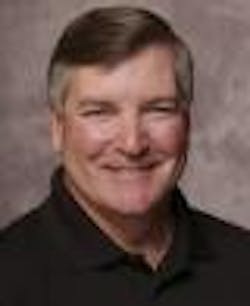Who are the chiefs at your plant, and are you giving them the respect and appreciation they deserve?
Following World War II there were events to honor the service of those who fought and died in the war. At one such event in Los Angeles, CA, the keynote speaker was Admiral William “Bull” Halsey, an aggressive Navy task force and fleet commander during many historic engagements.
The event organizers had contacted a number of active duty and retired Chief Petty Officers who had served with Admiral Halsey during his career. These senior non-commissioned sailors were asked to participate as “sideboys.”
(Sideboys, or tending the side, is a sea service ritual. It is used for formal events such as retirement ceremonies, change of commands, or to recognize distinguished visitors. The sideboys form two rows facing each other, and render honors as the honored person walks between them.)
On this day in 1945, following the Admiral’s speech, he left the stage and walked between the rows of sideboys. The Admiral stopped and winked at one of the retired Chief Petty Officers, then continued his departure.
At a reception following the event, Admiral Halsey was asked about the wink he shared with the retired Chief. Halsey replied, “That man was my Chief when I was an Ensign, and no one before or after taught me as much about ships or men as he did. You civilians don’t understand. You go down to Long Beach and you see those big battleships sitting there, and you think that they float on water, don’t you? You are wrong. They are carried to sea on the backs of those Chief Petty Officers.”
When I refer to chiefs, or chief petty officers, I include those who have attained the rank of E-7 (chief petty officer), E-8 (senior chief petty officer), and E-9 (master chief petty officer), and to their equivalent senior non-comm ranks in the other services. In the military it is well known that chiefs are the backbone of the service. They implement orders and set the standard. They are experts in their field. More importantly, they are experts at developing the character and talents of others.
Chiefs also train junior officers like Ensign Halsey, perhaps their most important role. The junior-most officer out-ranks the chief. But if officers want to be successful, they respect the chiefs, listen with both ears when the chief has something to say, and trust their recommendations. The really successful officers continue to take advice from chiefs throughout their career.
Now, think about your own organization, and ask:
- Who are your chiefs?
- Do you show respect and appreciation for the chiefs in your organization?
- Do your chiefs have the freedom and latitude to be chiefs?
Every organization can, and should, have their version of chiefs. Just as ships are carried on the backs of chiefs, so too are civilian organizations carried on the backs of their chiefs. Chiefs teach the managers that listen to them more about the plant and about leading people than they would otherwise know.
You can identify the chiefs in your organization by looking for those who have experience and knowledge, and who are respected by others. They have a personal mission that includes being attentive to the well-being of the organization and to developing others technically/professionally and in terms of leadership.
Respect and appreciation for your chiefs is shown by asking them for their views, trusting their judgment, and giving them credit when things go well. Include them when making important decisions that affect the organization or the people in it.
If you can’t identify who your chiefs are within five minutes of thinking about it, I would say you have some work to do – on yourself. When it’s not obvious, either your actions or the organization’s culture has marginalized those that would be chiefs. Work on yourself by proactively engaging people with experience, knowledge and who are respected by others.
Empower them. Trust them. Show them respect and appreciation. Go forth and do great things.
This article is part of our monthly Human Capital column. Read more from Tom Moriarty.
About the Author
Tom Moriarty
P.E., CMRP, President of Alidade MER, Inc.
Tom Moriarty, P.E., CMRP is president of Alidade MER, Inc., a consulting firm specializing in asset management, reliability engineering, and leadership improvement. He is a member of SMRP (Florida Chapter Board Member and CED Director), a past Chair of ASME’s Canaveral Florida Section, and author of the book “The Productive Leadership System; Maximizing Organizational Reliability”. He has a BSME, an MBA (organizational development), is a licensed professional engineer (PE) in Florida, and a Certified Maintenance and Reliability Professional (CMRP). Contact him at [email protected], (321) 773-3356, or via LinkedIn at www.linkedin.com/in/alidade-mer.


